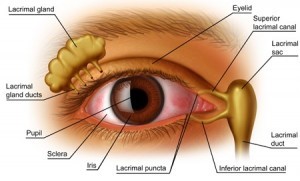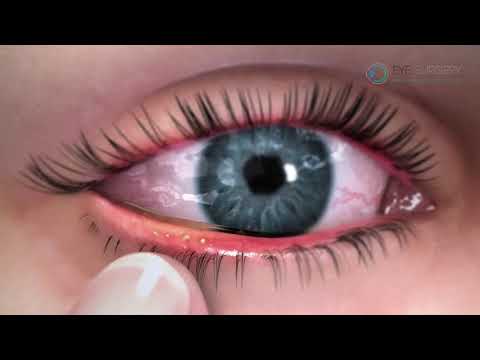The surface of the eye is a clear window known as the cornea. The clarity of vision through this clear window is highly dependent on the health of the tear film and eye lids.


The tear film is made up of 3 layers, a protein (mucin) layer, a watery (aqueous) layer and an outer oil layer. The absence of any one of these layers causes the tear film to break up and the cornea to become dry and sore. People liken it to a car windscreen; without water the wiper blades grate on the windscreen. In the same way, dryness of the cornea causes irritation. This irritation triggers reflex watering by the tear glands. Hence, paradoxically, dry eyes actually frequently present as watery eyes (epiphora). The watering is a reflex reaction to ocular discomfort. The use of lubricant drops, coating and protecting the cornea, can thus reduce irritation and therby reduce any reflex watering (epiphora).
Less commonly, watery eyes (epiphora) are caused by tears not being adequately drained away, because of a narrowing or blockage in the drainage system of the eye. Tears typically drain through a punctum in the inner aspect of the upper and lower lid margins into canaliculi. These canaliculi drain into a nasolacrimal sac before emptying into the nose. An ophthalmologist will be able to localise any blockage in this system by probing and syringing the tear ducts in clinic.
If there is a blockage of the tear ducts it is important to localise and treat this to prevent infection from stagnating tears.

